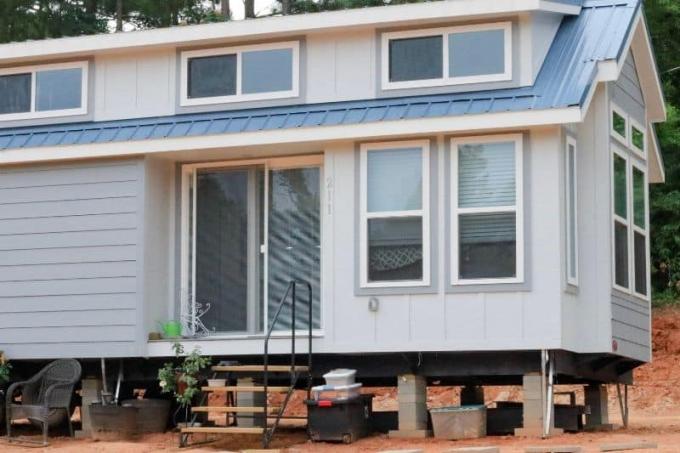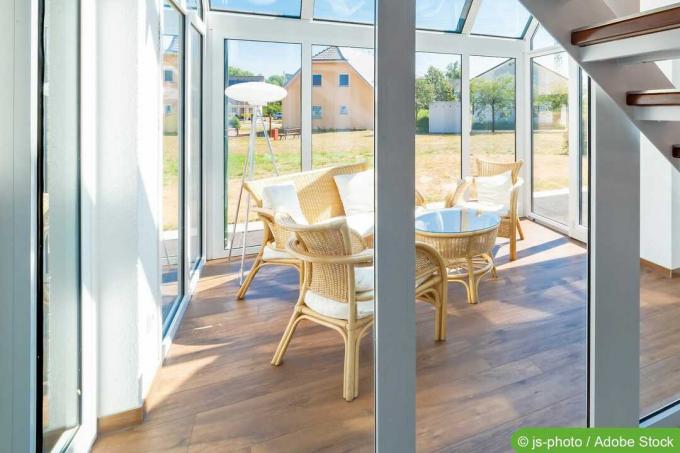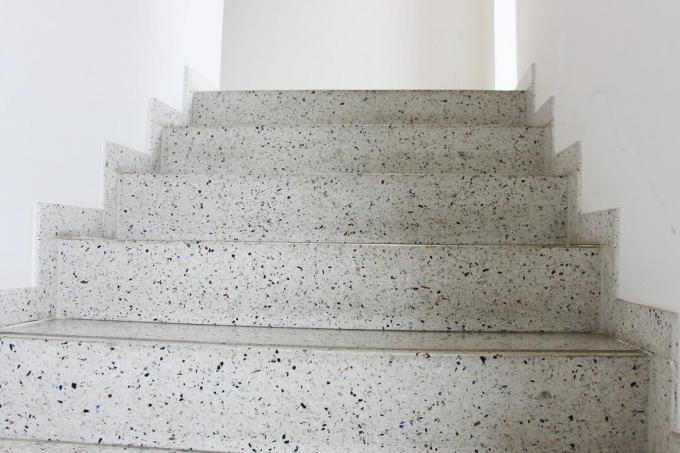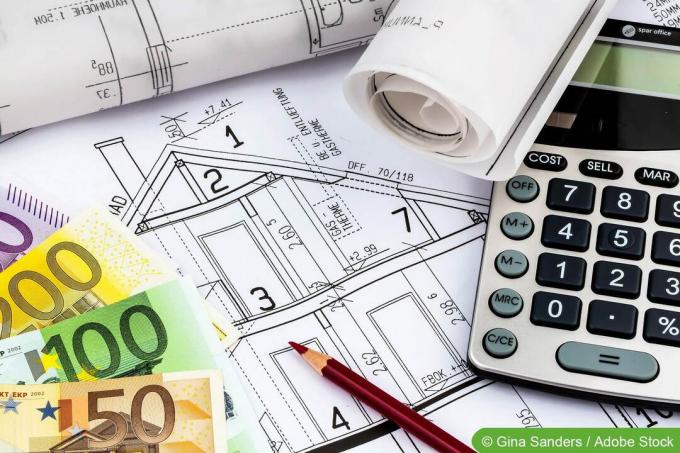

Table of contents
- Definition: follow-up financing
- Building savings contract as follow-up financing
- Advantages
- Disadvantages
- frequently asked Questions
If the original building financing has come to an end, but there is still a remaining debt, the question arises about follow-up financing. This should be planned early in order to choose the best option. Follow-up financing through the building savings contract is one of the options.
Definition: follow-up financing
The dream of owning your own home: Follow-up financing becomes necessary when the first building financing and fixed interest rate expires, but the debts have not yet been completely paid off. In order to pay the difference, continued financing must be chosen. There are four options for this:
- Building savings contract
- Forward loan
- Rollover
- Debt restructuring

During an extension, the existing loan with the bank is extended. Since the fixed interest rate has expired, the amount of the installments may change. The effort is the lowest here.
To refinance your debt, you take out a loan from another bank. This step requires more preparation, but may be worth it given better offers.
A forward loan is taken out several years before the end of the first loan. It can be taken out with your own bank or a new bank and offers a high level of security.
Tip:
It makes sense to consult with various banks and providers or with an independent financial advisor in order to choose the most sensible option in your individual case.
Building savings contract as follow-up financing
A rarely mentioned option for follow-up financing is: Building savings contract. Building savings contracts consist of the savings phase and the loan phase. During the first phase, savings amounts are deposited regularly. This continues until the so-called allocation readiness is reached. At this point, the building society can issue a low-interest loan that can be used to repay existing remaining debts.
Advantages

Follow-up financing via the building savings contract is particularly recommended when interest rates rise, as Have the contract maintain low interest rates seven to eight years before the upcoming follow-up financing. When the loan phase begins, the interest rates set at the time the contract was concluded apply. There are also other advantages such as:
- Payout of savings
- high flexibility
- high level of security
- no obligation to purchase
- Long-term planning possible
- additional security
With the building savings contract, you have the freedom not to accept the loan. If the interest rates have fallen in the meantime and it now makes more sense to choose another form of follow-up financing, the savings will be paid out and are therefore available. Financial flexibility is maintained.
Compared to forward loans, low interest rates can be maintained for even longer. The building savings contract can be concluded seven to eight years before follow-up financing begins. For the forward loan it is 66 months or 5.5 years. However, it is not easy because a forward loan can only be rejected subsequently in isolated cases. If the interest rates have fallen and you want to save through other follow-up financing, this is usually not possible.
Calculate follow-up financing
Tip:
If you know the value of your property, you can do so with a Calculate follow-up financing calculator conveniently online.
Disadvantages
The most significant disadvantage of a building savings contract as follow-up financing is the duration and timing. Since the savings phase lasts seven to eight years, the contract must be concluded on time. At this point, the forecast of interest rate developments determines whether building savings are profitable.

Also note whether the building savings contract is ready for allocation. This only happens when you
- the minimum savings balance
- the minimum saving time
achieved.
In addition, the building savings statement from the contract is not necessarily available on time. The building societies can only activate a certain number of loans during each allocation period. There is therefore a risk that you will have to wait several months for payments to begin. Interim financing is required for this period. This in turn means more effort, more fees and an overall higher burden.
Tip:
Despite the disadvantages, a building savings contract makes sense as security for follow-up financing. Even if you don't take the money as a loan, it is available as an option or will be paid out. If interest rates have risen, the building savings contract can significantly reduce the rates.
frequently asked Questions
For follow-up financing via a building savings contract, the loan should be concluded no later than eight years before the end of the loan. A forward loan can be taken out 66 months before the end of the loan. Debt restructuring and extension can be used shortly before the necessary change. The earlier the follow-up financing is planned, the better the chances of lower rates when interest rates tend to rise.
The interest rates for follow-up financing are currently between 3.5 and 4.0 percent, depending on the provider and term. Compared to interest rates ten years ago, there has been an increase. It is assumed that the trend will remain upwards in the next few years.
Yes, follow-up financing can be rejected if there are negative SCHUFA entries, the monthly burden is too high or your creditworthiness is limited.
 Mirko
Mirko
Find out more about legal matters

Tiny house on private property: building permit required?
Tiny houses are becoming more and more interesting for many people because of their small space requirements. When planning, the question arises early on whether a building permit is necessary. This depends primarily on the type of mini house that is to be built on the private property.

When does the winter garden count as living space?
Whether and to what extent the winter garden is part of the living space is important for the living space calculation. The area can have a significant impact on the rental price or the applicable property tax. What is important is the basis used for the calculation. Here you will find all information on the topic.

Does the stairwell count as living space?
Of course, real estate agents, house sellers or landlords want to specify the living space of an apartment or house as high as possible, as this drives up the price. But is it even permissible to include stairs in the calculation? Read here whether the stairwell counts as living space.

Costs of a preliminary building inquiry using the example of EFH
A preliminary building inquiry provides more planning security when building a house, can save money and effort and is therefore often useful. When making the request, builders should pay attention to a few points to avoid delays and problems. We provide information about the costs of a preliminary building inquiry using the example of a single-family home (EFH).

Calculate the floor area number (GRZ) correctly
Anyone who wants to build a property in this country will inevitably come across the floor area number (GRZ). This is a value for determining the permitted development area of the property. We will explain to you how to correctly calculate the floor area number.

Noise report: sample and PDF template for printing
Noise means stress for many people and can make you sick in the long term. Persistent noise does not have to be simply tolerated. In order to prove a disturbance of the peace, it makes sense to keep a noise log. Here you will find a pattern as a PDF template to print out.
